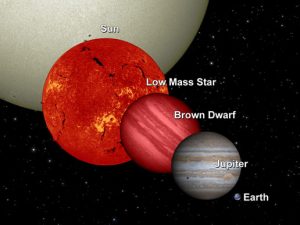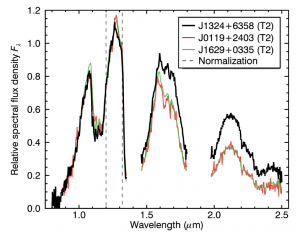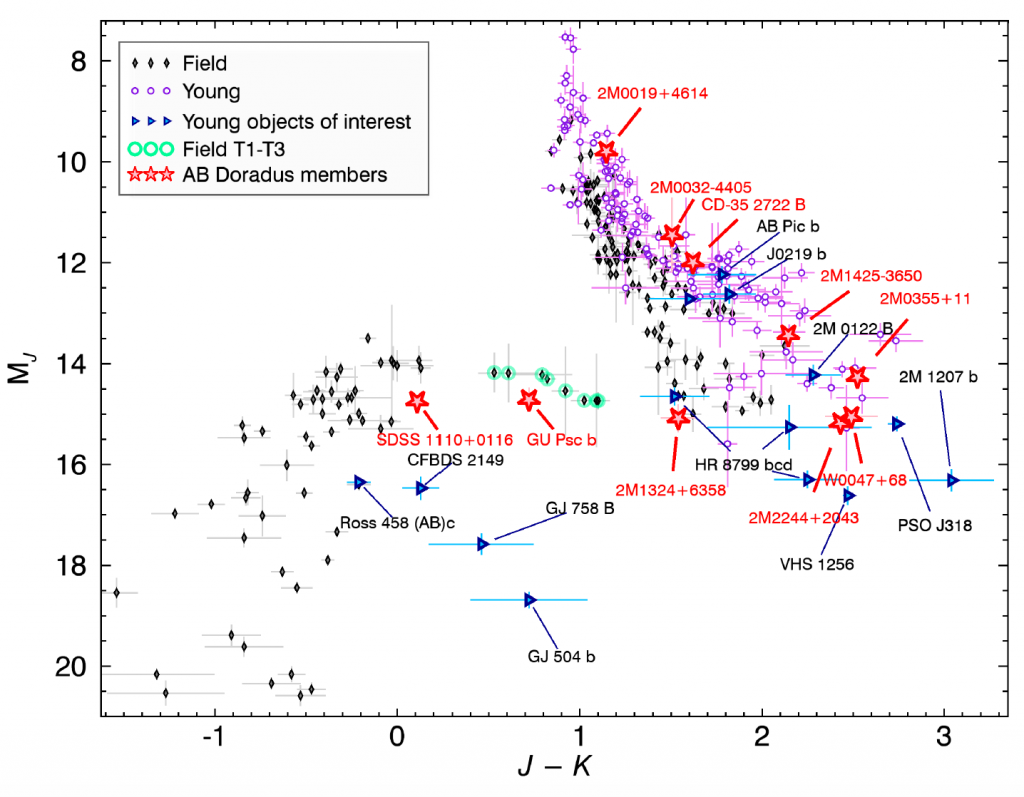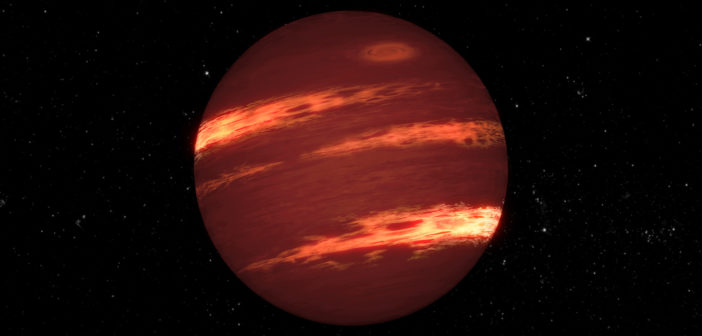Editor’s note: This article, written by AAS Media Fellow Kerry Hensley, was originally published on Astrobites.

Figure 1. A comparison of the sizes of Sun-like and low-mass stars to brown dwarfs, gas giants, and terrestrial planets. Though brown dwarfs have only slightly larger radii than Jupiter, they contain more than ten times the mass. [NASA/JPL-Caltech/UCB]
Astronomers have discovered over a thousand brown dwarfs, ranging in spectral type from the barely-sub-stellar late M dwarfs to the ultra-cool Y dwarfs, but questions about their formation, interior goings-on, and early lives remain. Of particular interest is the lower end of the mass range: where do we draw the line between brown dwarfs and planets? And where do the transitions between brown-dwarf spectral types lie?
A Curious Brown Dwarf in AB Doradus

Figure 2. The spectral energy distribution of 2M1324+6358 (black line) compared to two other T2 dwarfs. 2M1324+6358 is much brighter at long wavelengths than either of the other T2 dwarfs, which could mean that it’s an unresolved binary. [Gagné et al. 2018]
In order to learn more about 2M1324+6358, the authors first determine whether or not it belongs to AB Doradus, a young (~150 million years old), nearby (~65 light-years away) moving group. A moving group is a collection of stars, traveling together through the Galaxy, that formed at the same time from the same cloud of gas and dust. It’s much easier to figure out the age of a group of stars than an individual star, and since all stars in a moving group formed at the same time, figuring out if an object belongs to a moving group tells us its approximate age. Combining luminosity and color measurements with distance and age gives modelers the information they need to determine the brown dwarf’s radius, temperature, and surface gravity—critical information for exploring the muddy waters between small stars and giant planets.
First, the authors use parallax to determine the distance to 2M1324+6358. The parallax measurements hint that 2M1324+6358 belongs to the moving group because it’s at the same distance from the Earth. It’s not enough to just be at the right distance, though; stars are constantly in motion, and it’s common for a star to escape its natal cluster and mosey through neighboring clusters. However, a star that’s just passing through will tend to have a different velocity from stars that belong to the cluster, so if 2M1324+6358’s distance and velocity both match AB Doradus’, it’s very likely to belong. The authors pass the object’s velocity and location to a Bayesian statistical framework and find a cluster membership probability of 98% — bingo!
2M1324+6358: One Brown Dwarf or Two?
Figure 3 shows that 2M1324+6358 is fainter than other objects of similar spectral type, which means it’s unlikely to be a binary system. As a member of the AB Doradus moving group, it must also be young — just about 150 million years old. Young brown dwarfs are thought to be highly variable, due to both stellar activity and clouds drifting through their atmospheres, which could explain the unusual spectral features that led past studies to conclude it was a binary.

Figure 3. Color-magnitude diagram showing 2M1324+6358 (J-K ~ 1.6) in relation to other likely AB Doradus moving group members and field stars. 2M1324+6358 is slightly fainter in J-band than other T dwarfs. [Gagné et al. 2018]
Citation
Jonathan Gagné et al 2018 ApJL 854 L27. doi:10.3847/2041-8213/aaacfd

1 Comment
Pingback: a brown dwarf or stray planet?